Related Research Articles

Vijayadashami, more commonly known as Dussehra, and also known as Dasara or Dashain, is a major Hindu festival celebrated every year at the end of Durga Puja and Navaratri. It is observed on the tenth day of the month of Ashvin, the seventh in the Hindu lunisolar calendar. The festival typically falls in the Gregorian calendar months of September and October.
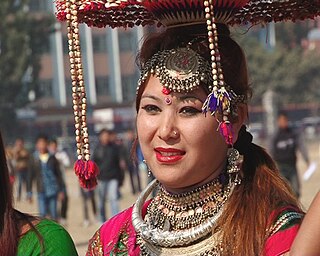
The Tharu people are an ethnic group indigenous to the Terai in southern Nepal and northern India. They speak Tharu languages. They are recognized as an official nationality by the Government of Nepal. In the Indian Terai, they live foremost in Uttarakhand, Uttar Pradesh and Bihar. The Government of India recognizes the Tharu people as a scheduled Indian tribe.
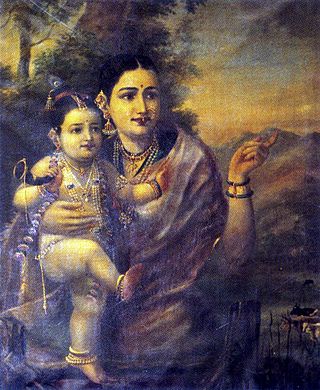
Krishna Janmashtami, also known simply as Krishnashtami,Janmashtami, or Gokulashtami, is an annual Hindu festival that celebrates the birth of Krishna, the eighth avatar of Vishnu. In certain Hindu texts, such as the Gita Govinda, Krishna has been identified as supreme God and the source of all avatars. Krishna's birth is celebrated and observed on the eighth day (Ashtami) of the dark fortnight in Shravana Masa or Bhadrapada Masa. This overlaps with August or September of the Gregorian calendar.

Bhai Dooj, Bhai Tika, Bhaubeej, Bhai Beej, Bhai Phonta or Bhratri Dwitiya is a festival celebrated by Hindus on the second lunar day of the Shukla Paksha of Kartika, the eighth month of the Vikram Samvat Hindu calendar or the Shalivahana Shaka calendar. It is celebrated during the Diwali or Tihar festival and Holi festival. The celebrations of this day are similar to the festival of Raksha Bandhan.

Naga Panchami is a day of traditional worship of Nag or snakes observed by Hindus, Jains, and Buddhists throughout India, Nepal, and other countries where Hindu, Jain, and Buddhist adherents live. The worship is offered on the fifth day of bright half of lunar month of Shravana (July/August), according to the Hindu calendar. Some Indian states, such as Karnataka, Rajasthan and Gujarat, celebrate Naga Panchami on the dark half of the same month. As part of the festivities, a Naga or serpent deity made of silver, stone, wood, or a painting is given a reverential bath with milk and their blessings are sought for the welfare of the family. Live snakes, especially cobras, are also worshipped on this day, especially with offerings of milk and generally with the assistance of a snake charmer.

Tihar is a five-day Hindu festival of Diwali celebrated in Nepal and the Indian regions of Sikkim and Gorkhaland, which host a large number of ethnic Indian Gorkhas
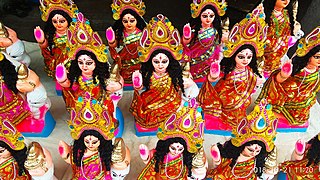
Sharad Purnima is a religious festival celebrated on the full moon day of the Hindu lunar month of Ashvin, marking the end of the monsoon season. The full moon night is celebrated in different ways in various cultural regions across Indian subcontinent.

Radhashtami is a Hindu religious day commemorating the birth anniversary of the goddess Radha, the chief consort of the god Krishna. It is celebrated in her birthplace Barsana and the entire Braj region on the eighth day (ashtami) of the bright (waxing) half of the lunar month of Bhadrapada. Radhashtami falls fifteen days after Krishna Janmashtami.
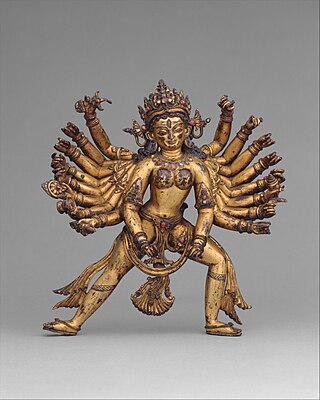
Dashain or Bada'dashain, also referred as Vijaya Dashami in Sanskrit, is a major Hindu religious festival in Nepal and the Indian states of Sikkim, West Bengal, Assam, South India, and Sri Lanka. It is also celebrated by Hindus of Nepal and elsewhere in the world, including among the Lhotshampa of Bhutan and the Burmese Gurkhas of Myanmar. The festival is also referred as Nauratha, derived from the Sanskrit word for the same festival Navaratri which translates to Nine Nights. A version of this festival is celebrated as Navaratri, Navaratri is not exactly the same as Dashain. Most Americans call it Dussehra or Dashera by Hindus in India, although rites and rituals vary significantly.

Maghe Sankranti is a Nepali festival observed on the first of Magh in the Vikram Sambat (B.S) or Yele calendar bringing an end to the winter solstice containing month of Poush. Tharu people celebrate this particular day as new year. It is also regarded as the major government declared annual festival of the Magar community. Maghe Sankranti is similar to solstice festivals in other religious traditions.
Tokha Chandeshwari is a village and former Village Development Committee that is now part of Tokha Municipality in Kathmandu District in Province No. 3 of central Nepal. At the time of the 2011 Nepal census it had a population of 3,961. Tokha Chandeshwari now is part of Tokha municipality.
Dhulabari is a town in Jhapa District in the Province No. 1 of south-eastern Nepal. It is part of Mechinagar Municipality.

Gaura Parva is a Hindu festival celebrated by the people residing in Sudurpashchim province and parts of Karnali province of Nepal as well as in Kumaon region of Uttarakhand state of India. The festival commemorates the wedding of the goddess Gaura/Gauri (Parvati) to Shiva. The festival falls in the Hindu month of Bhadra (August/September).
The religious festivals of the Kashmiri Pandits have Rigvedic roots. Some festivals of Kashmiri Pandits are unique to Kashmir. Some Kashmiri Pandit festivals are Herath (Shivaratri), Navreh, Zyeath-Atham, Huri-Atham, Zarmae-Satam (Janmashtami), Dussehra, Diwali, Pan, Gaad Batt, Khetsimavas (Yakshamavasya), Kava Punim, Mitra Punim, Tiky Tsoram, Gengah Atham, Tila Atham, Vyetha Truvah, and Anta Tsodah.
Punjabi festivals are various festive celebrations observed by Punjabis in Pakistan, India and the diaspora Punjabi community found worldwide. The Punjabis are a diverse group of people from different religious background that affects the festivals they observe. According to a 2007 estimate, the total population of Punjabi Muslims is about 90 million, with 97% of Punjabis who live in Pakistan following Islam, in contrast to the remaining 30 million Punjabi Sikhs and Punjabi Hindus who predominantly live in India.

Jitiya is a three-day-long Ancient Hindu festival which is celebrated from the seventh to ninth lunar day of Krishna-Paksha in Ashvin month. It is celebrated mainly in the Indian states of Uttar Pradesh, Bihar and Jharkhand and the country of Nepal as well as Nepali people of West Bengal. Mothers fast for well being of their children. It is celebrated for eight days in Jharkhand from first moon day to eight moon day in the first half of Ashvin month.
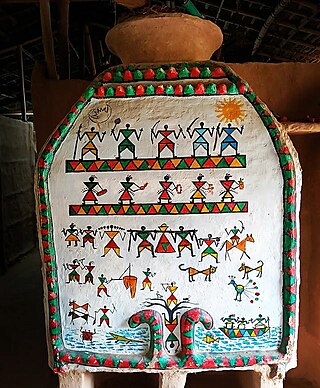
Ashtimki Chitra is a type of painting drawn on the day of Ashtimki festival celebrated by the Tharu community in the western region of Nepal.
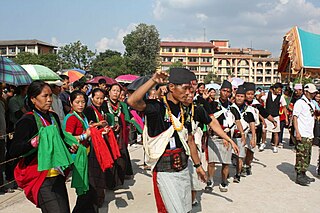
Bhume Naach is one of the festivals celebrated by the Kham Magar people from Lumbini and Karnali provinces of Nepal. The term Bhume means 'Earth' and Naach means 'dance' in the Nepali language. The Kham people practice a religion that worships the land, water sprouts (shim), forests and weather, asking for better crop yields and cattle.

Ahoi Ashtami is a Hindu festival celebrated about 8 days before Diwali on Krishna Paksha Ashtami. According to Purnimant calendar followed in North India, it falls during the month of Kartik and according to Amanta calendar followed in Gujarat, Maharashtra and other southern states, it falls during the month of Ashvin. However, it is just the name of the month which differs and the fasting of Ahoi Ashtami is done on the same day.
References
- ↑ About Ashthimki
- ↑ Tribhuvan University. "Ashtimkias the Site for the Performance of Tharu Identity" (PDF).
- ↑ "थारू समुदायमा अष्टिम्की अनुष्ठान". थारू समुदायमा अष्टिम्की अनुष्ठान. Retrieved 2022-06-21.
- ↑ "Ashtimki, an Ancient Form of Tharu Wall Painting". ECS NEPAL. Retrieved 2022-07-14.
- ↑ "Ritual of Ashtimki in Tharu community". Paschim Press. 2023-09-06. Retrieved 2023-11-27.
- ↑ "यसरी मनाइन्छ थारु समुदायमा कृष्ण जन्माष्टमी अर्थात अष्टिम्की (फोटो फिचर)". Online Khabar. Retrieved 2022-06-21.